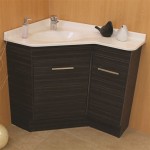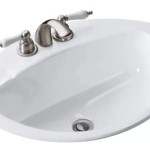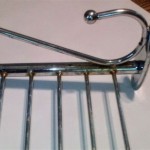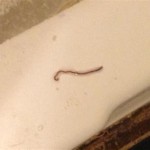Is It Safe To Drink Out Of The Bathroom Tap Water In Japan?
Japan is renowned for its high standards of cleanliness, hygiene, and infrastructure. These standards naturally extend to its water supply. The question of whether it is safe to drink tap water in Japan, including specifically water from bathroom taps, is a common one, especially for tourists and new residents. The straightforward answer is generally yes, tap water in Japan is considered safe to drink, even directly from the bathroom tap. However, a more nuanced explanation is warranted to fully understand the context and potential considerations.
The safety of tap water in Japan is heavily regulated and monitored by the national government. The Ministry of Health, Labour and Welfare sets stringent water quality standards that are among the highest in the world. These standards cover a comprehensive range of parameters, including the levels of bacteria, viruses, heavy metals, and various chemical contaminants. Water treatment plants across the country employ advanced technologies and rigorous processes to ensure that the water supplied to homes and businesses meets these safety thresholds. Regular testing and reporting are mandatory, contributing to the overall confidence in the safety and quality of Japan's tap water.
The water treatment process typically involves multiple stages, starting with coagulation and sedimentation to remove suspended particles. Filtration, often using sand or activated carbon filters, further clarifies the water. Disinfection, usually through chlorination, is employed to eliminate harmful microorganisms. In some areas, advanced treatment techniques such as ozonation or membrane filtration may be used to remove trace contaminants and improve the overall taste and odor of the water. The goal is to deliver water that is not only safe to drink but also palatable and aesthetically pleasing.
The distribution network also plays a crucial role in maintaining water quality. Japan has invested significantly in its infrastructure, including pipelines and reservoirs, to minimize leaks, corrosion, and other potential sources of contamination. Regular maintenance and upgrades are performed to ensure the integrity of the system and prevent the introduction of pollutants into the water supply. The emphasis on infrastructure reinforces the safety and reliability of the tap water across the country.
The General Safety of Tap Water in Japan
The consensus among health authorities, residents, and frequent visitors is that tap water in Japan is generally safe for consumption. This is attributable to the aforementioned stringent regulations, advanced treatment processes, and well-maintained infrastructure. Most households in urban and rural areas receive tap water that meets or exceeds the national water quality standards. The water is typically clear, odorless, and free from visible contaminants, making it a viable alternative to bottled water.
However, it's important to acknowledge that the quality of tap water can vary slightly depending on the region, the age of the building, and the specific plumbing system. In some older buildings, the pipes may be made of lead, which can leach into the water, particularly if the water has been sitting in the pipes for an extended period. While lead pipes are not common in modern construction, they may still be present in older buildings that have not undergone recent renovations. In such cases, it is recommended to flush the tap for a few minutes before drinking to clear out any water that may have been in contact with the lead pipes.
Another potential concern is the presence of residual chlorine, which is used as a disinfectant in water treatment plants. While the levels of chlorine are carefully controlled and considered safe, some people may find the taste or smell of chlorine unpleasant. If this is the case, the water can be left to sit in an open container for a few hours, allowing the chlorine to dissipate. Alternatively, using a water filter designed to remove chlorine can improve the taste and odor of the water.
Despite these minor considerations, the overall safety and quality of tap water in Japan are generally high. The vast majority of residents and visitors consume tap water without any adverse effects. Bottled water is readily available for those who prefer it, but it is not typically necessary from a safety perspective. Indeed, many Japanese people regularly drink directly from the tap, reflecting their confidence in the country's water supply system.
Specifically Addressing Bathroom Tap Water
The question of whether it's safe to drink from the bathroom tap in Japan warrants specific attention. In most cases, the water supplied to the bathroom tap is the same as the water supplied to the kitchen tap. Both taps are typically connected to the same municipal water source, and the water undergoes the same treatment processes. Therefore, if the kitchen tap water is safe to drink, the bathroom tap water is generally safe as well.
However, there are a few potential factors that could affect the water quality specifically in the bathroom. One consideration is the potential for contamination from the plumbing fixtures themselves. Bathroom taps, especially older ones, may accumulate mineral deposits or harbor bacteria if not properly maintained. Regular cleaning and disinfection of the tap can help to minimize these risks. Another consideration is the possibility of backflow from toilets or other sources of wastewater. While backflow prevention devices are typically installed to prevent such occurrences, it is still prudent to exercise caution and avoid drinking from bathroom taps if there is any suspicion of contamination.
Furthermore, it's worth noting that in some older buildings, the plumbing system may be more complex or less well-maintained in the bathroom compared to the kitchen. This could potentially lead to variations in water quality between the two locations. If there is any doubt about the safety of the bathroom tap water, it is always best to err on the side of caution and either use the kitchen tap or opt for bottled water.
Despite these potential caveats, the vast majority of bathroom taps in Japan supply water that is safe for consumption. The same stringent regulations and monitoring processes that apply to the overall water supply also apply to the water delivered to bathrooms. As long as the plumbing system is well-maintained and there are no visible signs of contamination, drinking from the bathroom tap should not pose any significant health risks.
Practical Considerations and Recommendations
While the tap water in Japan is generally safe, there are some practical considerations and recommendations that can help to ensure a positive experience. First, it is always a good idea to run the tap for a few seconds before drinking, especially if the water has been sitting in the pipes for a while. This can help to flush out any stagnant water and ensure that you are getting fresh, clean water.
Second, if you are concerned about the taste or odor of chlorine, you can use a water filter pitcher or faucet-mounted filter to remove the chlorine. These filters are readily available in Japan and can significantly improve the palatability of the water. Alternatively, you can let the water sit in an open container for a few hours, which will allow the chlorine to dissipate naturally.
Third, if you are staying in an older building, it is a good idea to inquire about the plumbing system. If the building has lead pipes, it is important to flush the tap for a longer period of time before drinking to minimize the risk of lead exposure. You may also want to consider using bottled water or a water filter that is specifically designed to remove lead.
Fourth, pay attention to any signs of contamination, such as discoloration, unusual odors, or sediment in the water. If you notice any of these signs, do not drink the water and report the issue to the building management or local authorities. In most cases, such issues are quickly resolved, but it is always best to err on the side of caution.
Finally, when in doubt, it is always better to be safe than sorry. If you are unsure about the quality of the tap water in a particular location, opt for bottled water or consult with local residents or authorities. While tap water in Japan is generally safe, individual circumstances can vary, and it is important to make informed decisions based on your own specific situation.
In conclusion, the tap water in Japan, including the water from bathroom taps, is generally considered safe to drink due to the country's high standards of water treatment, rigorous monitoring, and well-maintained infrastructure. While there are some potential considerations, such as the age of the building and the presence of chlorine, these can typically be addressed through simple measures like flushing the tap or using a water filter. By following these practical recommendations and exercising common sense, residents and visitors can confidently enjoy the safe and readily available tap water that Japan has to offer.

Is Tap Water Safe To Drink In Japan Tourist

Tap Water In Japan Is It Safe To Drink Japanlivingguide Net Living Guide

You Can Drink Tap Water In Japan Living

Facts On Japan S Drinkable Tap Water Matcha Travel Web

Is It Safe To Drink Water From Your Bathroom Tap

How To Know Whether You Can Drink The Tap Water In A Foreign Country
Can People Safely Drink Water From The Sink In Tokyo Japan What Is Worst That Could Happen Quora

Is Bathroom Sink Water Safe To Drink Get The Facts Here
Is It Common In Japan To Drink Tap Water Quora

Tokyo Q A Is Tap Water Safe To Drink Time Out
Related Posts







